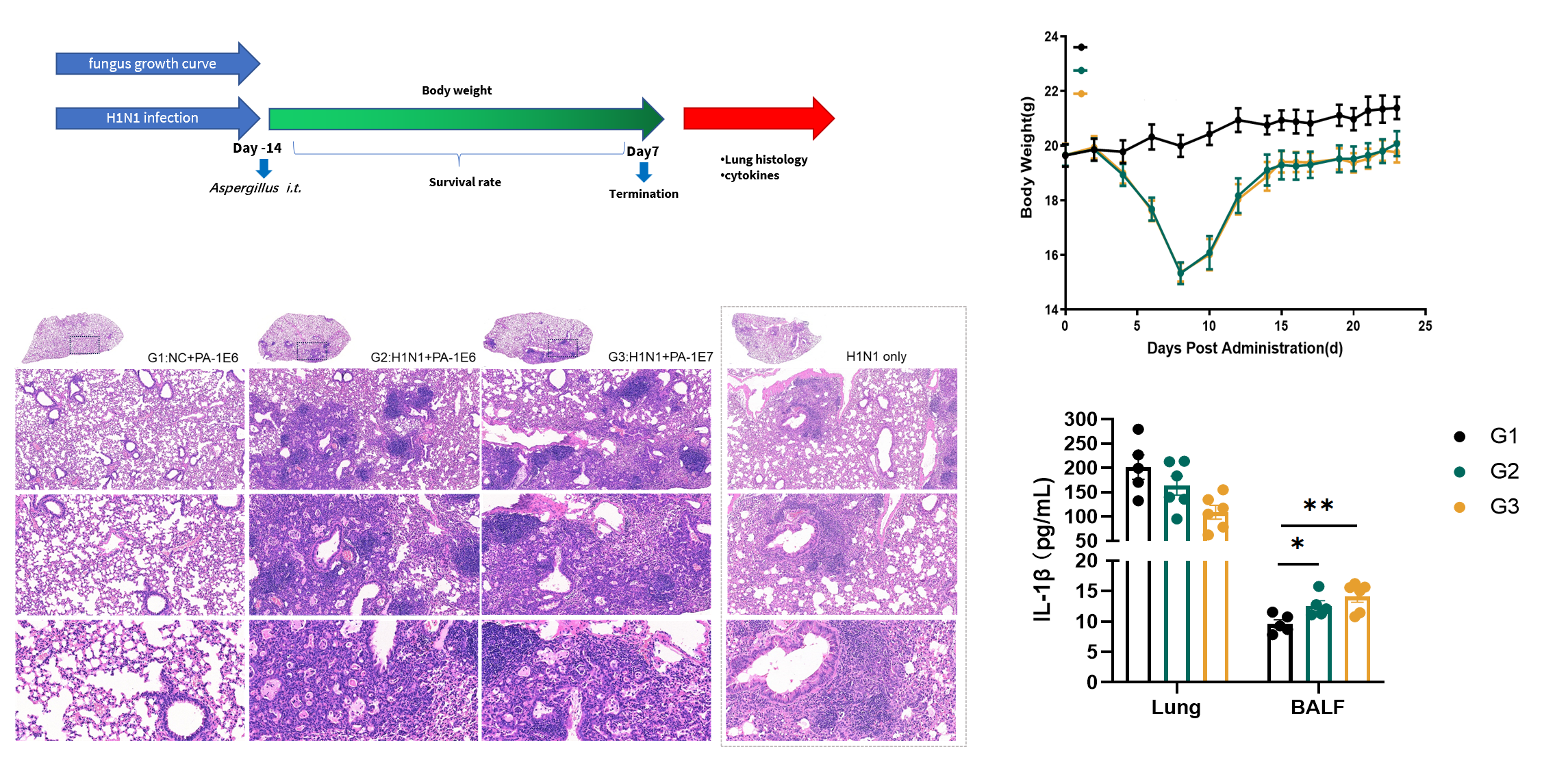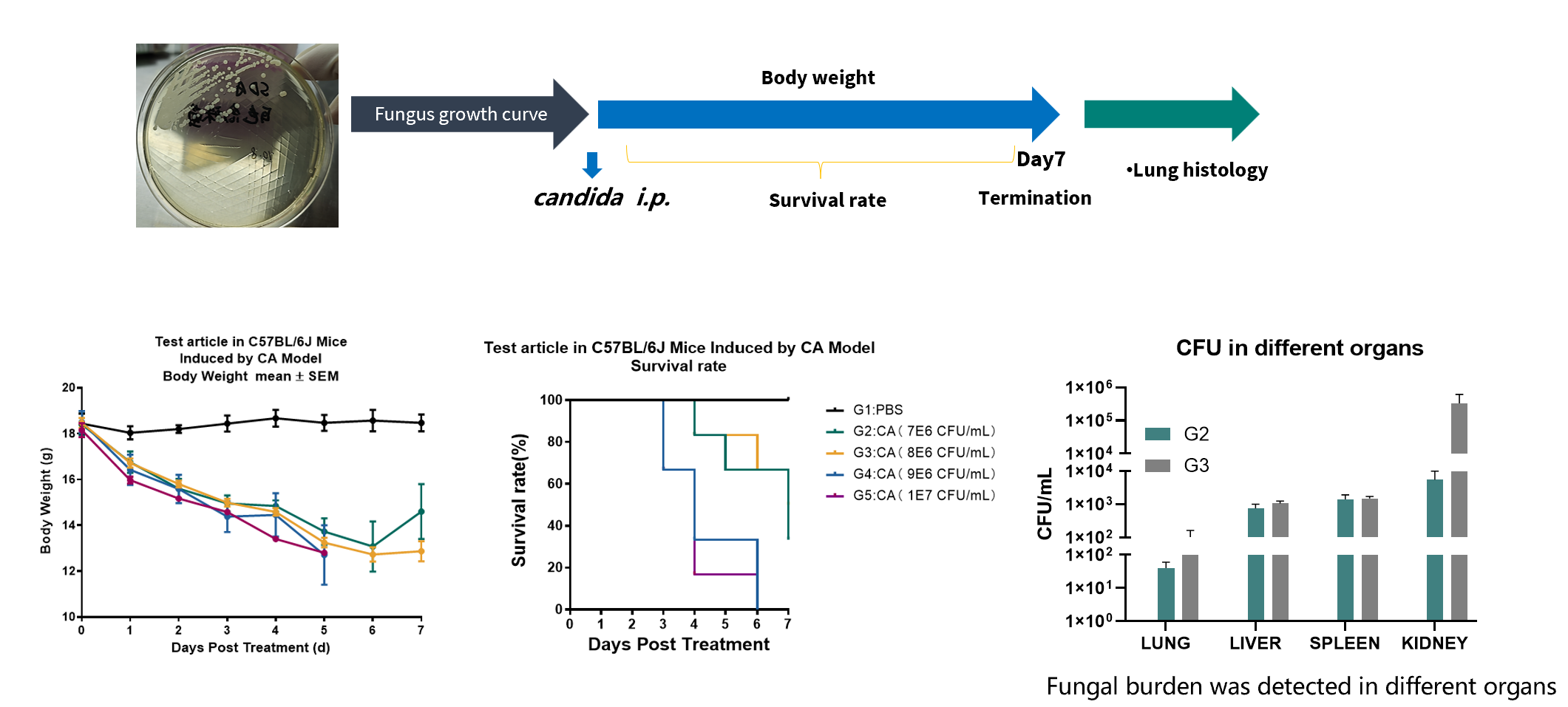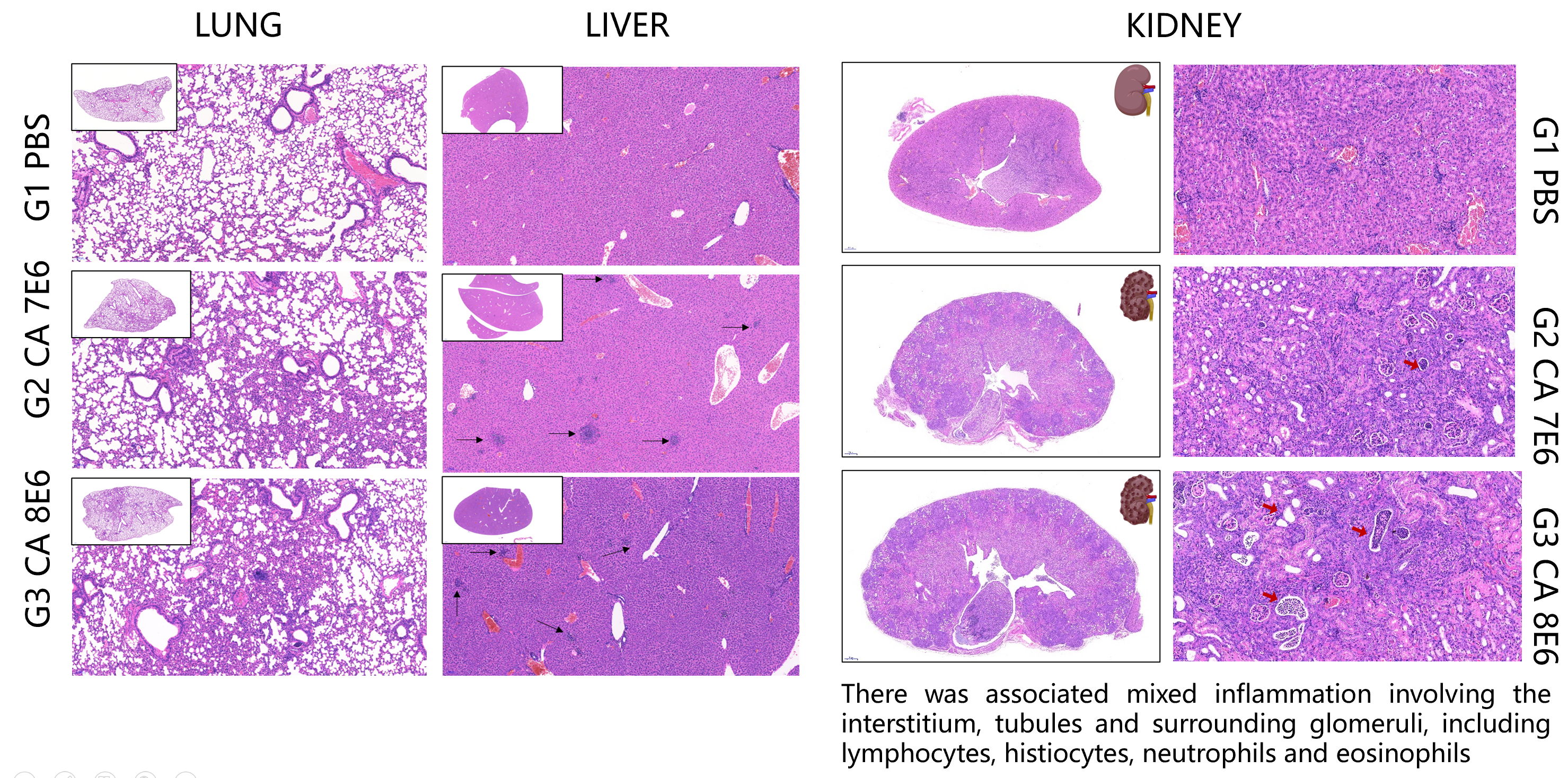Fungal infection models are designed to study the pathogenesis of fungal diseases and test the effectiveness of antifungal drugs. Mice are infected with various fungi, and we observe the progression of the infection, the immune response of the host, and the impact of antifungal drugs on fungal growth and survival. This provides valuable data for the development of new antifungal therapies.
Case 1: H1N1 + Aspergillus Infection
Clinically, influenza patients are prone to concurrent pulmonary Aspergillus infections. Therefore, we established this combined model to be more in line with clinical research. The model allows us to comprehensively study the complex interactions between influenza virus and Aspergillus in the pulmonary environment. Using this model, we can observe the dynamic changes of the respiratory system during co-infection, such as inflammatory response, immune cell activation, and tissue damage.

The mice infected with H1N1 were challenged with Aspergillus at day 14 post infection
Case 2: Fungal Sepsis with Candida albicans
Fungal sepsis, caused by invasive fungal infections, is a serious and life-threatening condition. Hazards include a high mortality rate, long-term health impacts, and various complications. The incidence rate has been increasing in recent years due to the aging population, invasive medical procedures, and immunosuppressive diseases and drugs.
To establish fungal sepsis, immunocompetent mice are intraperitoneally injected with Candida albicans. Then, the mortality rate, body weight changes, fungal burden in tissues, and histopathological changes of mice are observed.


Fungal sepsis caused by Candida albicans in immunocompetent mice

